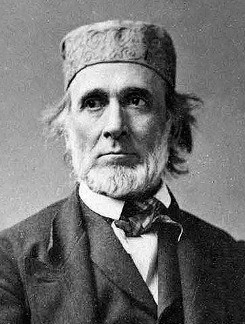
Hiram Powers American sculptor legacy is a story of groundbreaking artistry and cultural influence that shaped both American and European sculpture in the 19th century. As one of the first American sculptors to gain international recognition, Powers’ work remains a testament to the power of neoclassical art infused with deep human emotion and social commentary. His enduring legacy continues to inspire artists and collectors around the world.
Early Life and Artistic Beginnings
Born in 1805 in a small town in Vermont, Hiram Powers demonstrated a passion for sculpture from a very young age. Coming from humble beginnings, Powers’ early years were shaped by a deep curiosity and relentless work ethic. As a teenager, he apprenticed under local artisans, absorbing the fundamentals of carving and modeling. However, it was his determination to pursue higher artistic achievement that pushed him beyond American shores to the art-rich landscapes of Italy.
Italy, with its thriving neoclassical movement and centuries-old artistic heritage, became the ideal environment for Powers to refine his skills. Settling in Florence, Powers surrounded himself with fellow artists and intellectuals, gaining exposure to classical statues and Renaissance masterpieces that deeply influenced his style. This period was crucial in shaping what would become the enduring Hiram Powers American sculptor legacy.
Defining the Legacy of Hiram Powers American Sculptor Legacy
The phrase “Hiram Powers American sculptor legacy” perfectly encapsulates the profound and lasting impact of his work. Powers’ sculptures are more than just artistic expressions; they represent ideals of beauty, morality, and humanity. His masterpiece The Greek Slave remains one of the most influential and controversial works of the 19th century. This sculpture not only showcased Powers’ technical mastery but also engaged audiences in critical conversations about slavery, freedom, and human dignity, at a time when such topics were highly charged politically and socially.
The Greek Slave depicts a young woman in chains, symbolizing both physical captivity and moral resilience. Its unveiling stirred discussions across continents, helping to elevate American art on the international stage. Powers’ ability to capture complex emotions through stone earned him lasting acclaim and ensured that his name would be remembered as a trailblazer in American sculpture.
Artistic Style and Major Works
Powers’ artistic style is distinguished by its exquisite attention to anatomical detail and a steadfast commitment to classical principles. He combined precision with poetic sensitivity, breathing life and narrative into marble and bronze. Unlike many of his contemporaries who focused solely on form, Powers’ sculptures invited viewers into stories of virtue, innocence, sacrifice, and resilience.
Aside from The Greek Slave, some of Powers’ other notable works include Eve, a sculpture that explores the theme of temptation and innocence with grace and subtlety, and The Fisher Boy, which captures youthful vitality and a connection to nature. Each piece reflects Powers’ dedication to portraying the human spirit and condition with honesty and beauty.
For those eager to explore the neoclassical movement further and understand Powers’ place within it, The Smithsonian American Art Museum offers comprehensive collections and resources dedicated to American sculptors who have shaped the nation’s artistic heritage.
The Cultural Impact of Hiram Powers
As one of the earliest American artists to achieve widespread recognition in Europe, Hiram Powers played a crucial role in shaping the trajectory of American sculpture. His success abroad helped legitimize American art at a time when European traditions dominated the cultural landscape. Powers demonstrated that American artists could match their European counterparts in skill and thematic depth.
His sculptures were displayed in prestigious galleries and exhibitions across the United States and Europe, earning praise from critics and fellow artists alike. Powers’ influence extended beyond sculpture into literature and popular culture, inspiring writers and intellectuals of the era. By blending classical forms with contemporary social issues, he ensured his work remained relevant and thought-provoking.
Why Hiram Powers’ Legacy Matters Today
In today’s art world, which is often characterized by rapid change and experimentation, the legacy of Hiram Powers endures as a beacon of classical artistry and thoughtful narrative. His works continue to be admired not only for their technical brilliance but also for their timeless appeal to human values and emotion.
Collectors and museums worldwide still seek Powers’ sculptures, and his contributions are studied extensively in academic circles. Powers’ ability to connect art with deeper societal themes makes his legacy particularly relevant, reminding us of the power of art to reflect and influence cultural values.
For those interested in learning more about the evolution of American art and its key figures, the National Gallery of Art provides valuable exhibitions and educational materials, including detailed explorations of Powers’ impact.

Frequently Asked Questions (FAQ)
Q1: Who was Hiram Powers?
A1: Hiram Powers was a 19th-century American sculptor renowned for his neoclassical sculptures, most famously The Greek Slave. He played a key role in bridging American and European art traditions.
Q2: What is the importance of The Greek Slave?
A2: The Greek Slave was revolutionary in both technique and subject matter, offering a powerful commentary on slavery and freedom that resonated deeply in the political and social contexts of its time.
Q3: Where did Hiram Powers work most of his life?
A3: Powers spent most of his career in Florence, Italy, where he was inspired by classical and Renaissance art traditions.
Q4: How did Hiram Powers impact American sculpture?
A4: Powers was among the first American sculptors to gain international fame, helping establish American art as a serious cultural force worldwide.
Q5: Where can I see Hiram Powers’ sculptures today?
A5: His sculptures are featured in prominent institutions, including the Smithsonian American Art Museum and other major museums across the globe.
Q6: What themes did Hiram Powers explore in his art?
A6: Powers explored themes such as beauty, innocence, morality, sacrifice, and resilience, often linking classical ideals with contemporary social issues.




